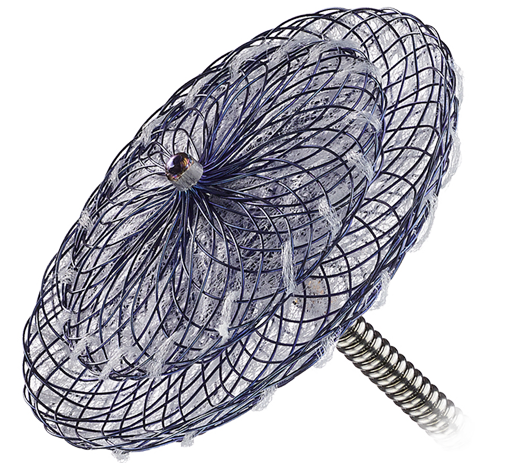Patent Foramen Ovale (PFO) Closure
Is PFO closure with AmplatzerTM PFO Occluder right for you? Give us a call to learn more about your options.
CALL 515.875.9090
What is a patent foramen ovale (PFO)?
When the foramen ovale, a small flap-like opening between the right and left upper heart chambers, doesn’t close during infancy, the remaining hole is known as a patent foramen ovale (PFO). While nearly 25% of adults have a PFO, most never know they have it and it usually doesn’t cause any issues. Often, a PFO is found only during tests for other heart conditions.
For those with a PFO, problems may arise when a blood clot flows through the opening. While PFO doesn’t cause a stroke, it can give an opening to a blood clot to potentially reach the brain.
Though research studies are ongoing, there is a possible link between PFO and migraines and cryptogenic stroke (or a stroke with an unknown cause).
What are my therapy options for treating PFO?
For the majority of people with a PFO, treatment isn’t necessary. But for those experiencing complications associated with PFO, medication or a closure procedure may be recommended.
Medications
Blood-thinning medications like aspirin or warfarin may be used to lower the risk of blood clots slipping through a PFO.
Surgery with Amplatzer PFO Occluder Closure Device
To close a PFO, the Amplatzer PFO Occluder device may be recommended for you. The device features a double-disc construction (connected with a short “waist”) made of Nitinol wire mesh and layered with thin polyester fabric. To close the PFO, one disc is placed on each side of the hole. Though a permanent solution, the device can be repositioned as needed to ensure a proper fit.
What is the PFO closure procedure?
This procedure, done via a catheter, is less invasive than an open surgery. Usually, a local anesthetic is used to numb specific areas, specifically the location of the catheter insertion. A thin, flexible tube is inserted into your artery through a small cut via your groin, and then it’s guided to your heart. The Amplatzer PFO Occluder device is then placed on both sides of the PFO, straddling the hole. The permanent device then stops the flow of blood between the two heart chambers.
What happens after you receive the PFO closure procedure?
Once the catheter is removed and the incision is closed up, you’ll rest for several hours. Then follow-up images are taken to make sure the Amplatzer PFO Occluder device is properly placed. Usually, you can go home the same day or the day after your procedure.
Care & Activity
The incision site in your groin may be sore, but you can often get back to regular activity within a week. You’ll likely be required to take a blood thinner for at least six months to prevent blood clots from forming.
Follow-Up Care
And then you’ll have a series of follow-up visits, including medical imaging, to ensure the Amplatzer PFO Occluder device is working as intended.